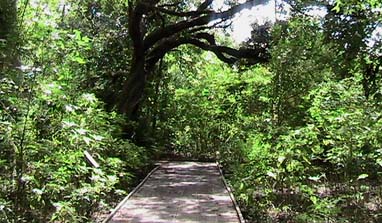We generally think of any wildlife population inside of a national park as being safe from human disturbance. That, however, is not quite true, according to a study published in the journal Ecology and Society last month.
The study, which used data from three Canadian national parks, Banff, Kootenay and Yoho, found that when hiker traffic increased on a trail, both wolves and elk avoided the area. In areas where hiker traffic was less than two people per hour, elk made themselves at home, while wolves stayed away, creating a predator-free refuge for the elk.
There was a brief story in the Toronto Globe and Mail. The Sierra Club blog summarizes the research along with other, similar findings. And there is a press release in ScienceDaily.
But read the paper itself in Ecology and Society. The devil is in the details, and the details weren’t necessarily parsed in the news stories. How these findings will apply to trails and parks in your state likely depends on a lot of things — from ecosystem type to the level of development around the park to average level of hiker traffic — and particularly to increases in the numbers of hikers.
Photo: This trail is in a US National Wildlife Refuge. Courtesy US Fish and Wildlife Service

